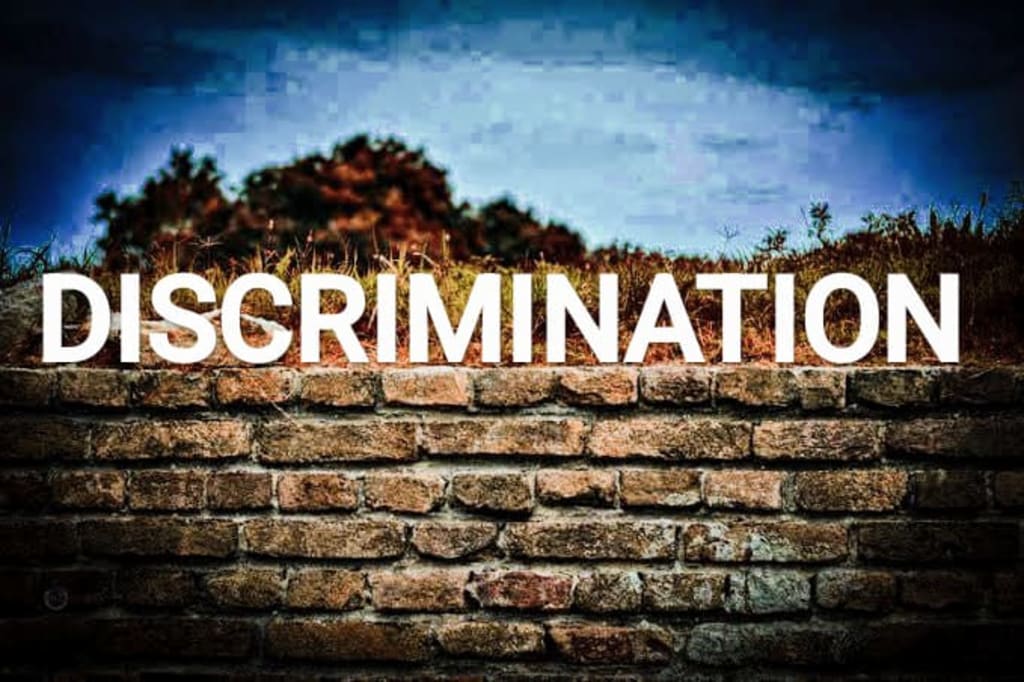Content warning
This story may contain sensitive material or discuss topics that some readers may find distressing. Reader discretion is advised. The views and opinions expressed in this story are those of the author and do not necessarily reflect the official policy or position of Vocal.
"Casteism Now Days"
A Diverse Tale of Discrimination

Title: The Shifting Landscape of Casteism in Modern India: A Diverse Tale of Discrimination
Casteism, an age-old social hierarchy deeply rooted in Indian society, has undergone a transformation in contemporary times. While the fundamental structures persist, the manifestations of discrimination faced by individuals belonging to lower castes have evolved, reflecting the diverse tapestry of India itself. As someone who has traversed various states within the country, I have witnessed firsthand the multifaceted nature of caste-based discrimination, each region painting a unique picture shaped by its language, people, and economic dynamics.
Gone are the days when casteism was overt and unapologetic, confined within rigid boundaries dictated by tradition and upheld by societal norms. Today, discrimination based on caste takes on subtler forms, adapting to the changing social fabric while retaining its insidious grip on the collective psyche. It is no longer solely defined by birthright but is influenced by factors as varied as education, occupation, and urbanization.
One of the striking aspects of modern casteism is its regional variability. India, a land of myriad cultures and languages, offers a spectrum of experiences for individuals navigating their caste identities. The discrimination faced by someone from a lower caste in one state may differ significantly from that experienced in another. Language acts as a powerful marker, shaping social interactions and perceptions. The nuances of discrimination are woven intricately into the linguistic landscape, with certain dialects carrying connotations of caste superiority or inferiority.
Moreover, economic disparities play a significant role in perpetuating caste-based discrimination. In urban centers, where opportunities abound and socioeconomic status often takes precedence over caste, discrimination may manifest in more subtle forms, such as exclusion from certain social circles or workplace biases. However, in rural areas where traditional structures remain deeply entrenched, caste continues to wield considerable influence, dictating access to resources and opportunities.
As I have personally experienced, the stigma attached to lower castes is not easily shed. It lingers like a shadow, following individuals wherever they go, subtly shaping their interactions and opportunities. The mere revelation of one's caste identity can elicit a spectrum of reactions, from indifference to outright prejudice. I have conducted a social experiment, concealing my caste identity in certain situations while openly acknowledging it in others. The difference in treatment was stark, underscoring the enduring impact of caste on social dynamics.
The pervasiveness of caste-based discrimination underscores the pressing need for societal introspection and reform. While legislative measures such as affirmative action have sought to address historical injustices, true equality remains elusive. Progress towards a caste-free society requires a concerted effort at both the institutional and grassroots levels. Educational initiatives aimed at promoting social awareness and inclusivity, coupled with economic empowerment programs, can help dismantle the entrenched structures of casteism.
Furthermore, fostering inter-caste dialogue and promoting cross-cultural exchanges can foster greater empathy and understanding, bridging the divides perpetuated by caste. Embracing diversity in all its forms is essential for building a more equitable society where individuals are valued for their merits rather than their birthright.
In conclusion, casteism in modern India is a complex phenomenon shaped by a myriad of factors, including language, economics, and social dynamics. While the outward manifestations may have evolved, the underlying prejudices persist, casting a long shadow over the aspirations of millions. However, with concerted efforts towards social reform and inclusivity, there is hope for a future where caste ceases to be a barrier to individual progress and societal harmony.
About the Creator
gothwal_gagan
"🌍 Multifaceted Content Explorer 📝 | Embarking on a Boundless Writing Odyssey 🚀 | Venturing into Diverse Realms of Content Creation 🎨 | From Tech to Travel, Health to History - Ready to Dive Deep into Any Topic! 💡
Enjoyed the story? Support the Creator.
Subscribe for free to receive all their stories in your feed. You could also pledge your support or give them a one-off tip, letting them know you appreciate their work.





Comments
There are no comments for this story
Be the first to respond and start the conversation.